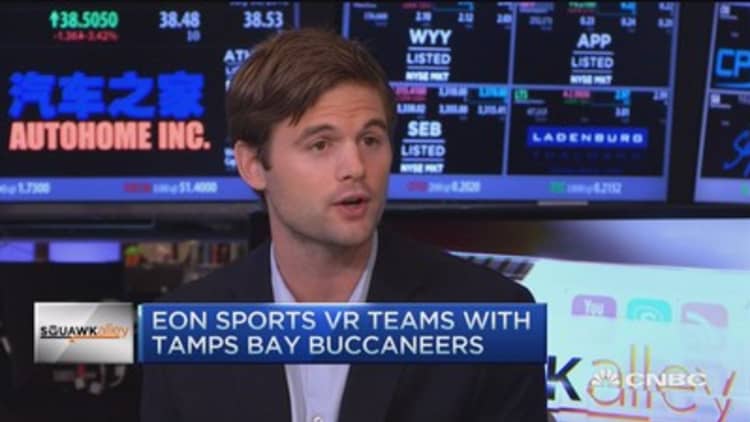A quarterback swivels his head, scanning for holes between defenders. A hitter watches a pitcher's curveball, timing its break over the plate. They do it all without another person or a field.
Numerous athletes — from the amateur to professional level — now use virtual reality to supplement live practice. Using software such as Eon Sports VR's Sidekiq, players can simulate full-speed games with only a headset and a smartphone.
Purdue University on Monday became the latest football program to partner with Kansas City-based Eon, planning to use virtual reality to train quarterbacks. Eon said it now works with the National Football League's Tampa Bay Buccaneers and six college football teams.
It's not just football. Virtual reality programs from Eon and others companies have gained traction in other sports including baseball, golf and soccer. Proponents tout the ability to practice with limited resources and minimal stress on an athlete's body.
"They can work on their timing without going through an exhaustive workout. That's really important when it comes to being fresh on the field," said Eon chief executive Brendan Reilly.
Reducing contact in practice has become especially crucial in football, where coaches from the youth to professional levels are aiming to curb brain injuries.
Virtual reality adoption has picked up in sports, and another company, Strivr Labs, counts six NFL teams, a National Basketball Association squad and a National Hockey League franchise as clients. The expansion comes as virtual reality grows on the consumer side, with tech giants from Facebook to Google parent Alphabet and Samsung betting on its adoption.
Google's Cardboard starts at $15, while Samsung's Gear VR — powered by Facebook's Oculus — sells for $99. The more expensive Oculus consumer model is set to launch later this year.
Eon hopes virtual reality's growing accessibility will lead more athletes to use it. Its Sidekiq headset costs $99, while packages of football software start at $39. Add a smartphone — which most young athletes already own — and players have an additional outlet to train away from practice.

In Purdue's case, quarterbacks will use virtual reality to simulate the team's specific plays, aiming to memorize the playbook in the process. Eon offers teams a package — ranging from $3,000 to $10,000 — to input their own plays as well as plays for the simulated defense.
"I'm excited about using Sidekiq here at Purdue. It will definitely speed up the process of our QBs," said Purdue quarterbacks coach Tim Lester in a statement. He previously used the technology at Syracuse University.
Virtual reality still has its problems. The lag between a user's movement and the change in visuals in the headset can give many users motion sickness.
Additionally, the use of virtual reality risks reducing real exercise for athletes.
Reilly said the technology is likely the most effective for baseball players. Eon's baseball package, called Project OPS and featuring former player Jason Giambi, costs about $100.
Pitching scenarios in baseball are more easily simulated and repeated than football plays, Reilly added.
Correction: Strivr Labs' website lists five NFL teams as partners, but the company says it has a partnership with six. Also, Jordan Spieth uses a golf simulator, which is not virtual reality. An earlier version of this article misstated that.




